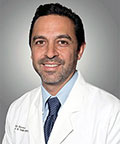- Home
- Foot & Ankle Conditions
- Pediatric Conditions
- Avascular Necrosis
Avascular Necrosis: causes, symptoms and treatment options
- Published 6/1/2018
- Last Reviewed 1/9/2024

What Is Avascular Necrosis of the foot (Freiberg's Disease)?
Avascular Necrosis (AVN), also called Freiberg's disease, osteonecrosis, or Freiberg infraction disease, is the death of bone tissue in the forefoot due to interruption of the blood supply. It’s an osteochondral condition, meaning it affects the cartilage and underlying bone in a joint.
It usually occurs in the second toe (the toe next to the big toe), but it can occur in the third or even fourth toes. It is a relatively rare musculoskeletal condition, though its complications can be quite serious. Freiberg disease in adults is possible, but it is more common in adolescents.
- What causes avascular necrosis?
- What are the symptoms of avascular necrosis?
- How is Freiberg’s disease diagnosed?
- What is Freiberg's disease treatment?
- Conservative treatment options
- Surgical Options
- Reach out to UFAI for your pediatric foot and ankle conditions
- How rare is Freiberg's disease?
- Can Freiberg's disease go away?
- Are there Freiberg infraction taping techniques?
-
ABFAS® Board Certified in Foot Surgery and Reconstructive Rearfoot and Ankle Surgery. and Director of University Foot and Ankle Institute
Dr. Bob Baravarian DPM, FACFAS is a Board-Certified Podiatric Foot and Ankle Specialist. He is an assistant clinical professor at the UCLA School of Medicine and serves as Director of University Foot and Ankle Institute.
Dr. Baravarian has been involved in athletics his entire life and played competitive tennis in high school and college. He has an interest in sports medicine, arthritis therapy, and trauma/reconstructive surgery of the foot and ankle. He is also fluent in five languages (English, French, Spanish, Farsi, and Hebrew),
-
ABFAS® Board Certified in Foot Surgery and Reconstructive Rearfoot and Ankle Surgery. and Director of University Foot and Ankle Institute
Dr. Bob Baravarian DPM, FACFAS is a Board-Certified Podiatric Foot and Ankle Specialist. He is an assistant clinical professor at the UCLA School of Medicine and serves as Director of University Foot and Ankle Institute.
Dr. Baravarian has been involved in athletics his entire life and played competitive tennis in high school and college. He has an interest in sports medicine, arthritis therapy, and trauma/reconstructive surgery of the foot and ankle. He is also fluent in five languages (English, French, Spanish, Farsi, and Hebrew),
 my foot doctor stopped taking my insurance. i didn't think that i would find as good a doctor, but i have. in fact 2 for the pr...Leslie V.
my foot doctor stopped taking my insurance. i didn't think that i would find as good a doctor, but i have. in fact 2 for the pr...Leslie V. Dr. Kelman is incredible as is his entire staff. So grateful for his help.Chandni B.
Dr. Kelman is incredible as is his entire staff. So grateful for his help.Chandni B. Dr. Franson is caring and generous with his time. He takes the time to answer your questions and concerns. Everyone in the offi...Amanda K.
Dr. Franson is caring and generous with his time. He takes the time to answer your questions and concerns. Everyone in the offi...Amanda K. Everyone at this office is wonderful!Rebecca R.
Everyone at this office is wonderful!Rebecca R. I have seen Dr. Franson twice now, once for calluses and once for ankle pain. He is an expert who is able to quickly pinpoint ...Jake C.
I have seen Dr. Franson twice now, once for calluses and once for ankle pain. He is an expert who is able to quickly pinpoint ...Jake C. Terrific. Dr Kelman got right to the issue and quickly resolved the matter.Scott L.
Terrific. Dr Kelman got right to the issue and quickly resolved the matter.Scott L. My experience was wonderful. I got my appointment same day. My doctor was very kind, explaining my ankle problems and started m...Susan S.
My experience was wonderful. I got my appointment same day. My doctor was very kind, explaining my ankle problems and started m...Susan S. Nice staff and great doctorMahnaz M.
Nice staff and great doctorMahnaz M. everyone there is great and the service is fantastic. Love, Dr. Franson and his staff.Lori M.
everyone there is great and the service is fantastic. Love, Dr. Franson and his staff.Lori M. Everybody has been extremely helpful and accommodating! I am extremely thankful for the help I’ve receivedJonathan R.
Everybody has been extremely helpful and accommodating! I am extremely thankful for the help I’ve receivedJonathan R. I have been a patient of Dr. Briskin for several years. Every time something happens to my legs he always helps me.Laura S.
I have been a patient of Dr. Briskin for several years. Every time something happens to my legs he always helps me.Laura S. Dr Briskin was great. His assistant however was not. She told me after looking at my xrays that everything was fine. And that...Lydia S.
Dr Briskin was great. His assistant however was not. She told me after looking at my xrays that everything was fine. And that...Lydia S.
